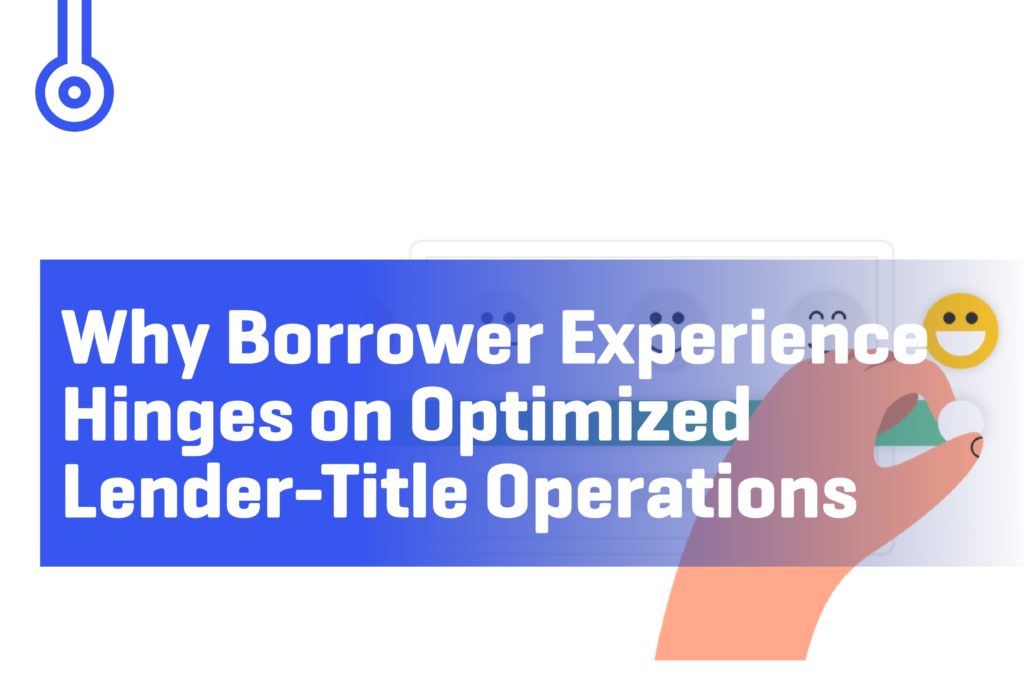Operations teams in the mortgage industry are under constant pressure to accelerate the manufacturing process, increase throughput, and minimize cost-per-loan. For many mortgage companies, however, this is easier said than done due to inefficient manual workflows that are error-prone, time-consuming, and costly. The stare and compare process is a great example of this.
As loans make their way through the manufacturing process, data and their source documents need to be analyzed and verified multiple times to ensure accuracy. Processes for checking and rechecking ensure that operations leaders can be confident in meeting risk profiles and making informed lending decisions. On the other hand, manual data verification takes time and expertise. It gets expensive quickly, which is why operations is always under the microscope as one of the biggest cost centers.
As interest rates rise and mortgage application volumes decline, operations costs can be stubbornly inflexible. Indeed, cost-per-loan can easily increase because you’re paying the same number of agents and underwriters to process fewer applications.
While this downturn in activity is certainly challenging for the industry, it’s also an opportunity for operations leaders to make smart investments in technology that can address these recurring challenges and make the business fit for a return in volumes. With that in mind, let’s examine four of the most common challenges we hear from the operations teams among our clients — and how TRUE solves each of them.
1. Minimizing cost-per-loan
Cost-per-loan is one of the most important metrics for any mortgage operations leader. But despite investments in technology — including loan origination systems (LOSs) and robotic process automation (RPA) — mortgage manufacturing costs have continued to increase. The core of the problem is not with these systems or processes. It’s with the data that feeds them. As the old adage says, garbage in, garbage out.
This is the specific problem that TRUE solves. Typically, our clients have an LOS; some have invested in RPA. Either way, these operators need clean data so that their systems and processes can work as intended. Once an organization has clean data, the value of automation investments can finally be realized.
TRUE’s powerful AI engines enable operations teams to automate the extraction of data from PDFs and scanned physical documents with 99 percent accuracy. Contextual analytics avoids common OCR problems, allowing the AI to correctly categorize unfamiliar document designs, cope with poor quality scans, and reliably recognize the difference between B and 8 or 1 and l. This drastically reduces the need for manual reviews – by as much as 85 percent – allowing operations teams to make better lending decisions faster.
Lesson
Like gasoline for an engine, lending automation runs on data. Bad fuel — or bad data — equals bad performance. To truly unlock the promise of automation in your lending business, you need a solution for fast and accurate docs-to-data conversion. That’s TRUE.
2. Decreasing defect rates
Humans aren’t perfect. Even the best trained and most experienced loan professionals make mistakes extracting data from documents. The AI that powers TRUE achieves near-perfect accuracy in docs-to-data conversion, but that can be hard for customers to believe at first.
While there’s a lot of skepticism about automation and AI — plenty of it justified — TRUE prides itself on the consistently high performance of our machine learning models. They work out-of-the-box and keep on improving.
Recently, a client called us to an urgent meeting because they believed TRUE had made 50 errors on the same data field. Clearly, the machine was broken, the client thought. But was it?
It turned out that 50 errors were made across 75,000 documents, and our software predicted and identified them. In normal circumstances, the human error rate for the same volume hovered around 15 percent, meaning that 11,250 errors would be typical. And as humans don’t naturally report on their errors, these errors would have likely gone unnoticed until much later in the mortgage manufacturing process. This side-by-side comparison helped our client to appreciate just how much accuracy had improved thanks to TRUE.
Lesson
It’s only human to be skeptical about new technology. Establish baseline data you can use to compare AI outcomes to previous standards to ensure you have a solid way to measure any new technology’s effectiveness.
3. Optimizing headcount
Determining how to staff accordingly is a persistent challenge for our clients. There are so many variables, affecting both the incoming volumes and the availability of employees. Many operations leaders build models for predicting throughput and balancing that against headcount, overtime, and outsourcing needs. When the models are wrong — and they’re hard to get right — the impact is seen on the bottom line.
TRUE takes this problem away entirely.
The speed and accuracy of our docs-to-data technology lets users scale up and down with fluctuating volumes without adding more people or incurring costly overtime expenses. When TRUE takes care of data extraction, the same number of underwriters can process more loans each day, which has a direct dollar impact on the bottom line.
Lesson
Every operations leader needs to match demand with throughput, but predictions will never be perfect. Lenders need to build elasticity into their business model so they can accommodate rising and falling volumes cost-effectively, and this is what TRUE delivers.
4. Managing seasonality
The mortgage industry is largely driven by seasonality, another elasticity challenge. Right now, the industry is especially quiet due to a cooling housing market, rising interest rates, and it being wintertime. As spring approaches, operations leaders need to determine when to staff up and by how much.
Our clients know that staffing can be the difference between profit or loss, or the enabler or blocker to growth. Staffing also plays a huge role in shaping the customer experience and brand reputation. With cost-per-loan metrics rising — and hiring and outsourcing becoming ever more challenging — adapting to seasonal and economic cycles is tougher than ever.
TRUE offers more than a short-term solution. It gives operations leaders a way to fundamentally change the elasticity of their operations, minimizing the impacts of seasonality and cycles.









